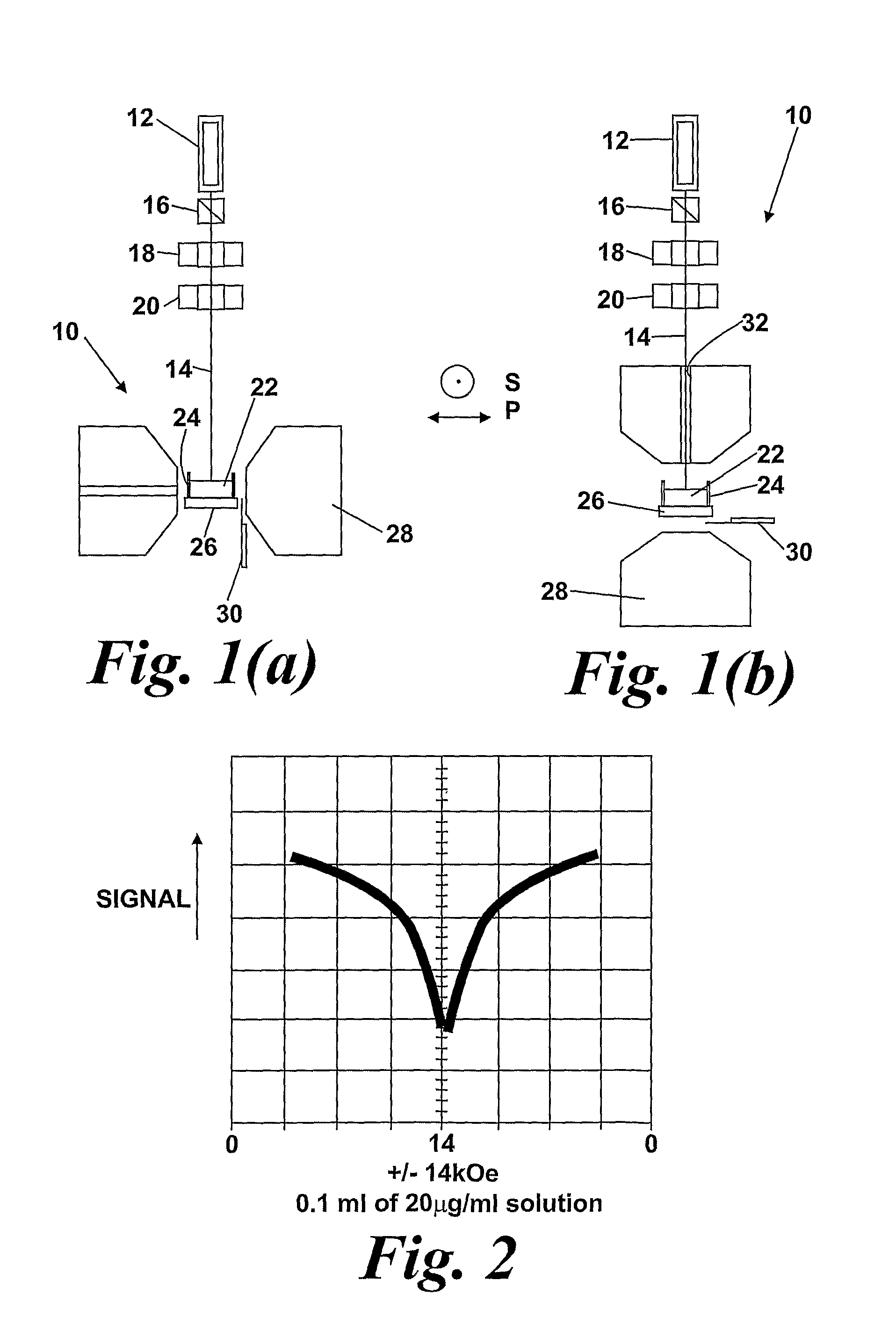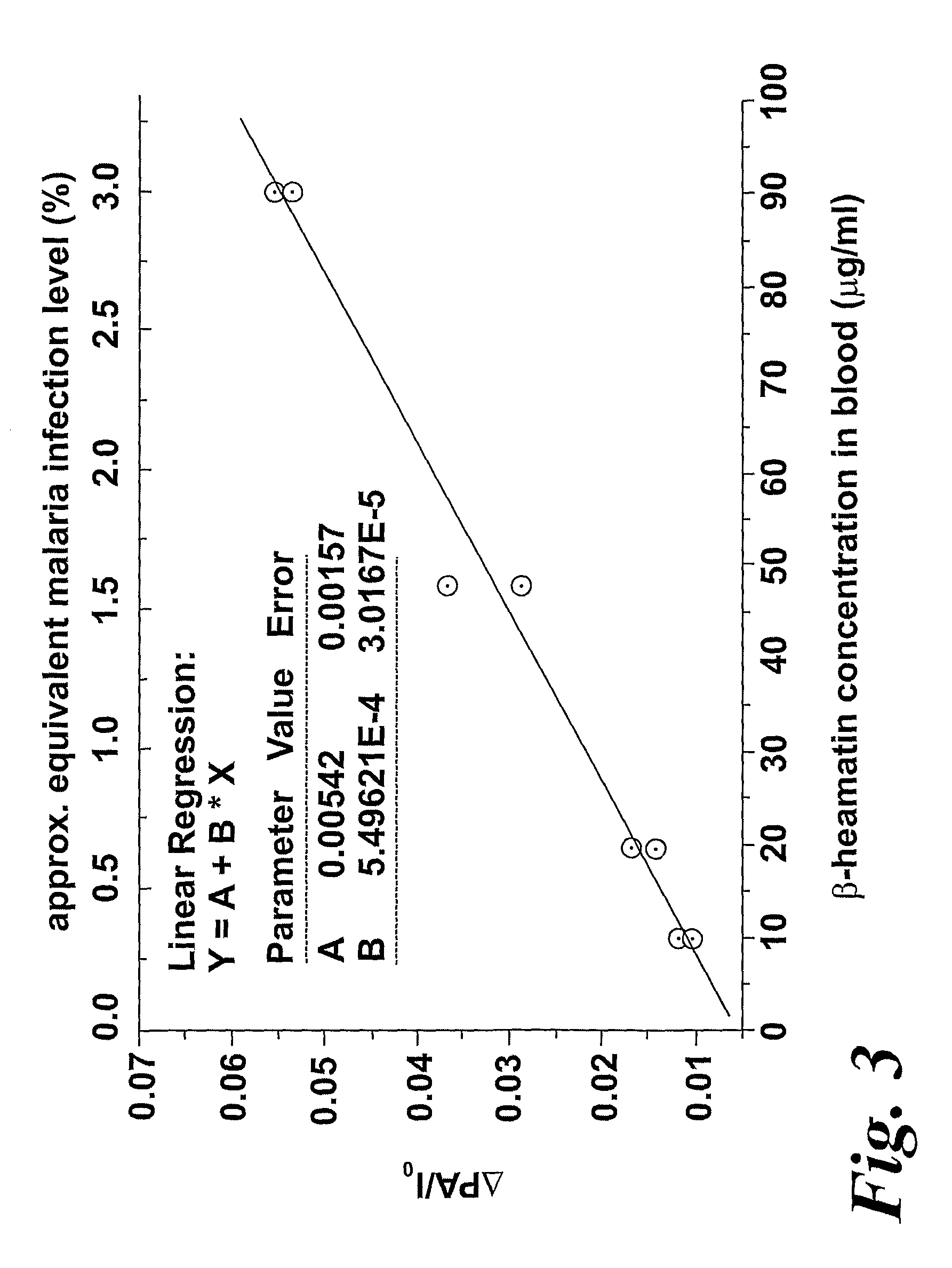Devices and methods for detecting β-haematin and haemozoin
a technology of haematin and -haemozoin, which is applied in the field of devices and methods for the detection of -haematin and haemozoin, can solve the problems of sensitivity discussed above being rarely obtained outside specialist laboratories, time-consuming and in reality subject to significant variability, and the emerging generation of diagnostic procedures remaining time-consuming and again too costly and complex for dissemination beyond specialist laboratories. , to achieve the effect of countering the depolarisation occurring within the patien
- Summary
- Abstract
- Description
- Claims
- Application Information
AI Technical Summary
Benefits of technology
Problems solved by technology
Method used
Image
Examples
Embodiment Construction
[0070]Although the present invention is applicable to the detection of haemozoin and β-haematin per se, an important aspect of the invention relates to the detection of the malarial parasite. The malarial parasite enters the red blood cells (erythrocytes) and converts the haemoglobin to haemozoin, which changes the magnetic state in the process. The erythrocytes subsequently burst, releasing haemozoin into the plasma, whilst the malarial parasite goes on to infect further erythrocytes. The present inventors have realised that it may be possible to detect the malarial parasite by detecting the presence of haemozoin in the blood.
[0071]In particularly preferred embodiments, the change in the magnetic state of the haemoglobin caused by the malarial infection is exploited by detecting suitable properties of haemozoin which are dependent on the application of a magnetic field.
[0072]In one preferred embodiment, photo-acoustic detection is used. Advantages associated with this approach are ...
PUM
 Login to View More
Login to View More Abstract
Description
Claims
Application Information
 Login to View More
Login to View More - R&D
- Intellectual Property
- Life Sciences
- Materials
- Tech Scout
- Unparalleled Data Quality
- Higher Quality Content
- 60% Fewer Hallucinations
Browse by: Latest US Patents, China's latest patents, Technical Efficacy Thesaurus, Application Domain, Technology Topic, Popular Technical Reports.
© 2025 PatSnap. All rights reserved.Legal|Privacy policy|Modern Slavery Act Transparency Statement|Sitemap|About US| Contact US: help@patsnap.com



